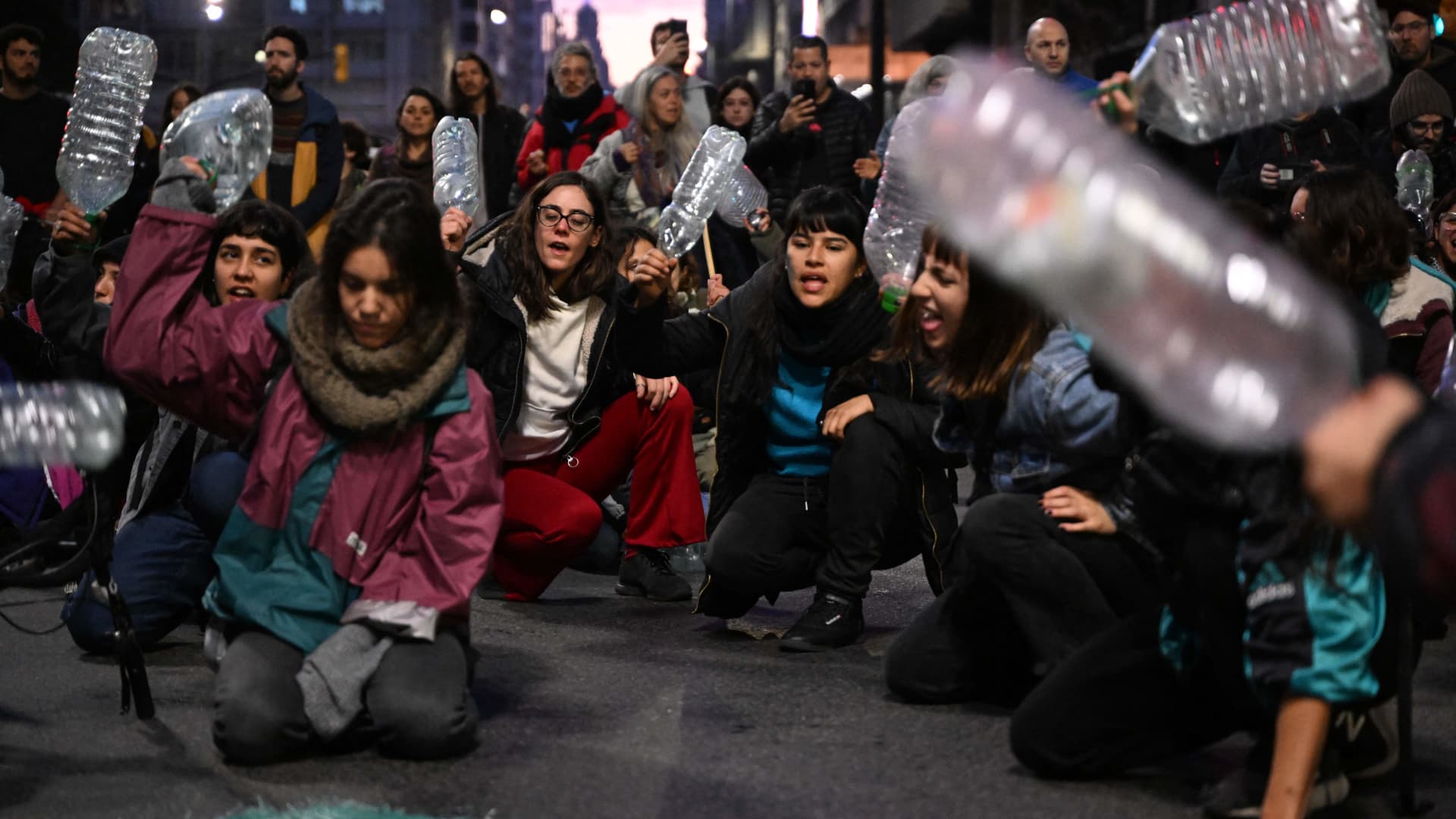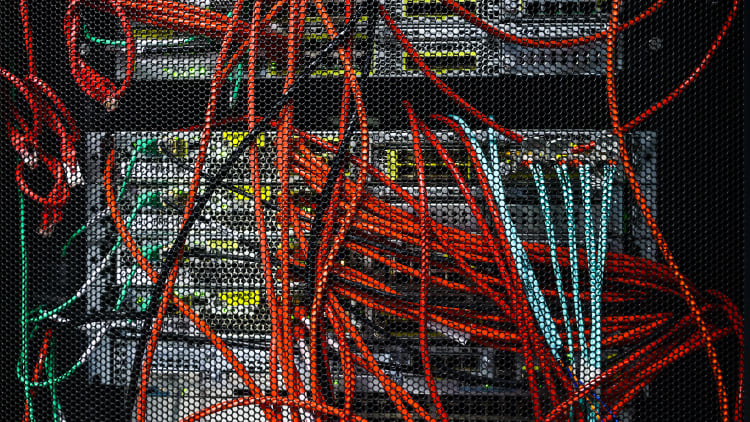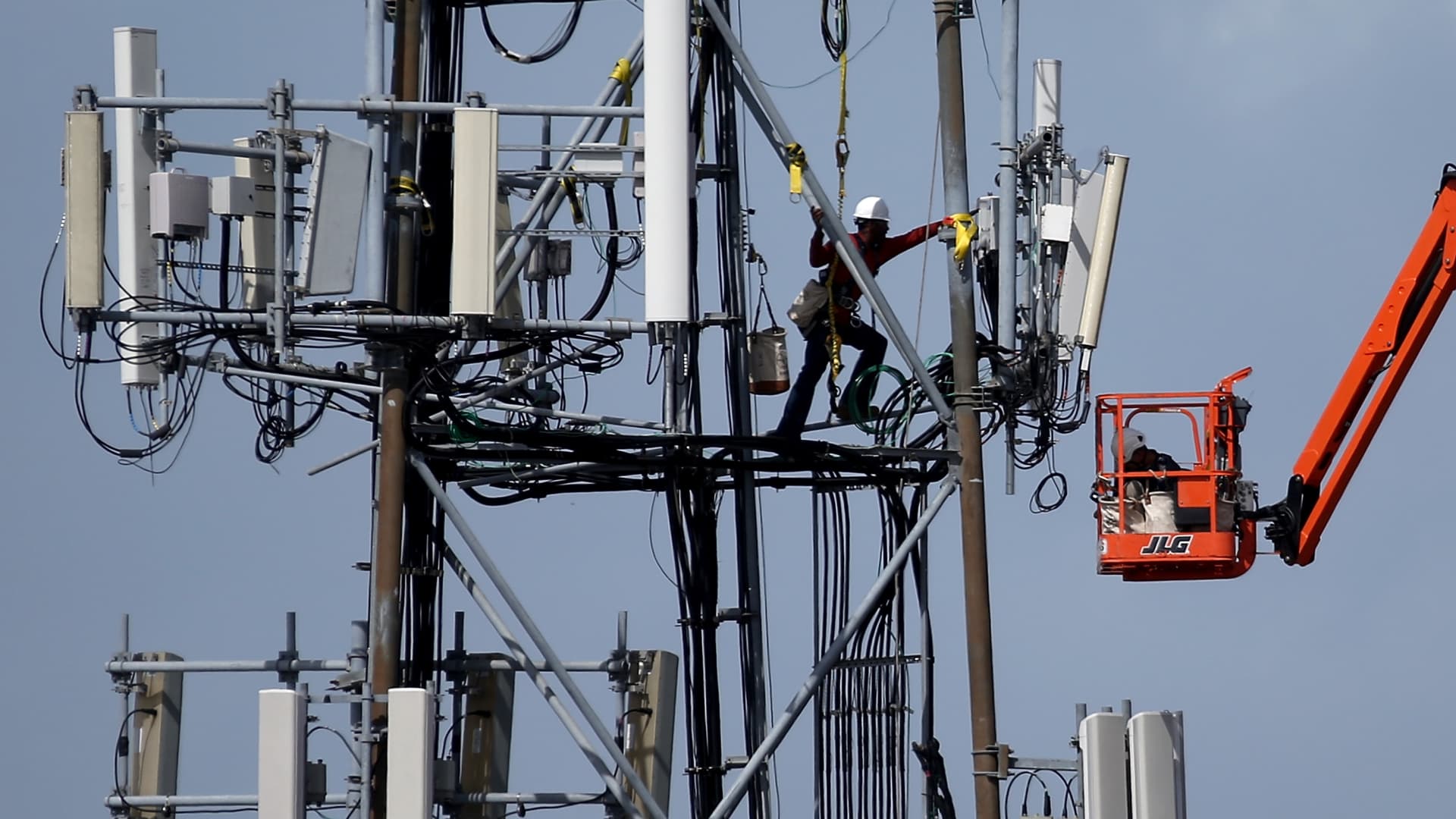

Dubai, UNITED ARAB EMIRATES — A global rush for the next wave of generative artificial intelligence is increasing public scrutiny on an often-overlooked but critically important environmental issue: Big Tech’s expanding water footprint.
Tech giants, including the likes of Microsoft and Alphabet-owned Google, have recently reported a substantial upswing in their water consumption and researchers say one of the main culprits is the race to capitalize on the next wave of AI.
Shaolei Ren, a researcher at the University of California, Riverside, published a study in April investigating the resources needed to run buzzy generative AI models, such as OpenAI’s ChatGPT.
Ren and his colleagues found that ChatGPT gulps 500 milliliters of water (roughly the amount of water in a standard 16-ounce bottle) for every 10 to 50 prompts, depending on when and where the AI model is deployed.
Hundreds of millions of monthly users all submitting questions on the popular chatbot quickly illustrates just how “thirsty” AI models can be.
The study’s authors warned that if the growing water footprint of AI models is not sufficiently addressed, the issue could become a major roadblock to the socially responsible and sustainable use of AI in the future.
People take part in a protest called by Uruguay’s Central Union (PIT-CNT) in “defense of water” against the handling of the national authorities with respect to the management of the shortage of drinking water reserves in Montevideo on May 31, 2023.
Eitan Abramovich | Afp | Getty Images
ChatGPT creator OpenAI, part owned by Microsoft, did not respond to a request to comment on the study’s findings.
“In general, the public is getting more knowledgeable and aware of the water issue and if they learn that the Big Tech’s are taking away their water resources and they are not getting enough water, nobody will like it,” Ren told CNBC via videoconference.
“I think we are going to see more clashes over the water usage in the coming years as well, so this type of risk will have to be taken care of by the companies,” he added.
‘A hidden cost’
Data centers are part of the lifeblood of Big Tech — and a lot of water is required to keep the power-hungry servers cool and running smoothly.
For Meta, its these warehouse-scale data centers that generate not only the highest percentage of its water use but also the lion’s share of its energy use and greenhouse gas emissions.
In July, protesters took to the streets of Uruguay’s capital to push back against Google’s plan to build a data center. The proposal sought to use vast quantities of water at a time when the South American country was suffering its worst drought in 74 years.
Google reportedly said at the time the project was still at an exploratory phase and stressed that sustainability remained at the heart of its mission.
With AI, we’re seeing the classic problem with technology in that you have efficiency gains but then you have rebound effects with more energy and more resources being used.
Somya Joshi
Head of division: global agendas, climate and systems at SEI
In Microsoft’s latest environmental sustainability report, the U.S. tech company disclosed that its global water consumption rose by more than a third from 2021 to 2022, climbing to nearly 1.7 billion gallons.
It means that Microsoft’s annual water use would be enough to fill more than 2,500 Olympic-sized swimming pools.
For Google, meanwhile, total water consumption at its data centers and offices came in at 5.6 billion gallons in 2022, a 21% increase on the year before.
Both companies are working to reduce their water footprint and become “water positive” by the end of the decade, meaning that they aim to replenish more water than they use.

It’s notable, however, that their latest water consumption figures were disclosed before the launch of their own respective ChatGPT competitors. The computing power needed to run Microsoft’s Bing Chat and Google Bard could mean significantly higher levels of water use over the coming months.
“With AI, we’re seeing the classic problem with technology in that you have efficiency gains but then you have rebound effects with more energy and more resources being used,” said Somya Joshi, head of division: global agendas, climate and systems at the Stockholm Environment Institute.
“And when it comes to water, we’re seeing an exponential rise in water use just for supplying cooling to some of the machines that are needed, like heavy computation servers, and large-language models using larger and larger amounts of data,” Joshi told CNBC during the COP28 climate summit in the United Arab Emirates.
“So, on one hand, companies are promising to their customers more efficient models … but this comes with a hidden cost when it comes to energy, carbon and water,” she added.
How are tech firms reducing their water footprint?
A spokesperson for Microsoft told CNBC that the company is investing in research to measure the energy and water use and carbon impact of AI, while working on ways to make large systems more efficient.
“AI will be a powerful tool for advancing sustainability solutions, but we need a plentiful clean energy supply globally to power this new technology, which has increased consumption demands,” a spokesperson for Microsoft told CNBC via email.
“We will continue to monitor our emissions, accelerate progress while increasing our use of clean energy to power datacenters, purchasing renewable energy, and other efforts to meet our sustainability goals of being carbon negative, water positive and zero waste by 2030,” they added.
Aerial view of the proposed site of the Meta Platforms Inc. data center outside Talavera de la Reina, Spain, on Monday, July 17, 2023. Meta is planning to build a 1 billion ($1.1 billion) data center which it expects to use about 665 million liters (176 million gallons) of water a year, and up to 195 liters per second during “peak water flow,” according to a technical report.
Paul Hanna | Bloomberg | Getty Images
Separately, a Google spokesperson told CNBC that research shows that while AI computing demand has dramatically increased, the energy needed to power this technology is rising “at a much slower rate than many forecasts have predicted.”
“We are using tested practices to reduce the carbon footprint of workloads by large margins; together these principles can reduce the energy of training a model by up to 100x and emissions by up to 1000x,” the spokesperson said.
“Google data centers are designed, built and operated to maximize efficiency – compared with five years ago, Google now delivers around 5X as much computing power with the same amount of electrical power,” they continued.
“To support the next generation of fundamental advances in AI, our latest TPU v4 [supercomputer] is proven to be one of the fastest, most efficient, and most sustainable ML [machine leanring] infrastructure hubs in the world.”







